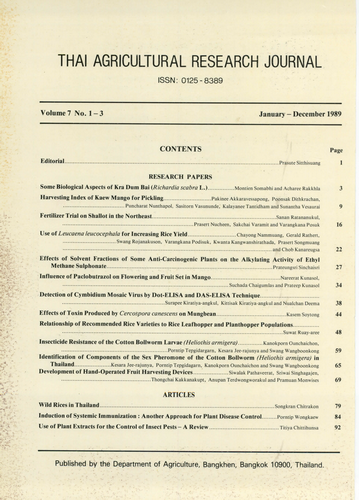Detection of Cymbidium Mosaic Virus by Dot-ELISA and DAS-ELISA Technique
Abstract
Two ELISA techniques were applied to detect Cymbidium mosaic virus (CyMv) in Oncidium orchid species. The dot-ELISA technique use nitro cellulose membrane (NCM) with a Millipore size of 0.45 um, as a support for the reaction. A mixture of Naothol AS-MX phosphate and fast red TR salt (5-chloro-2-toluidinediazonium chloride hemizene chloride) was used as the substrate. A positive reaction of the dot-ELISA technique shows as a pink spot between the substrate and enzyme phosphates type VII on the NCM. The DAS-ELISA (double antibody sandwich ELISA) technique uses a polystyrene micro titer plate as the support for the reaction. A positive reaction shows as a yellow colour between the substrate (Para-nitrophenyl) and enzyme alkaline phosphates in well of the plate. The dot-ELISA technique is about ten times more sensitive than the DAS-ELISA technique in detecting the virus particles. The pink spot of the positive reaction on the NCM in the dot-ELISA technique is permanent in dry conditions and able to be kept for a long time. Both ELISA techniques are highly efficient in diagnosing the CyMV and allow a large number of samples to be checked in a short time.
Downloads
Published
How to Cite
Issue
Section
License

This work is licensed under a Creative Commons Attribution-NonCommercial-NoDerivatives 4.0 International License.
Thai Agricultural Research Journal



